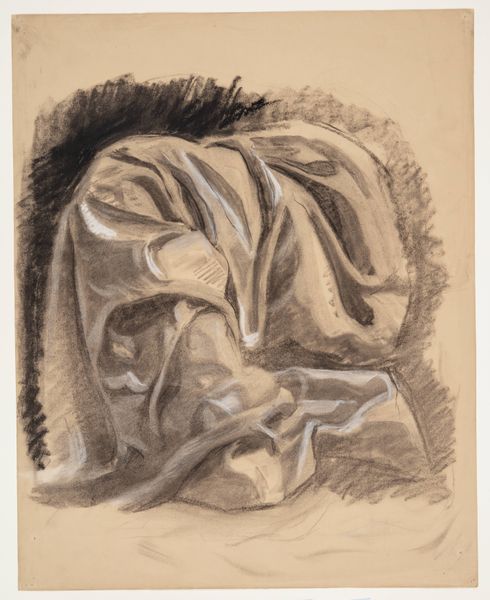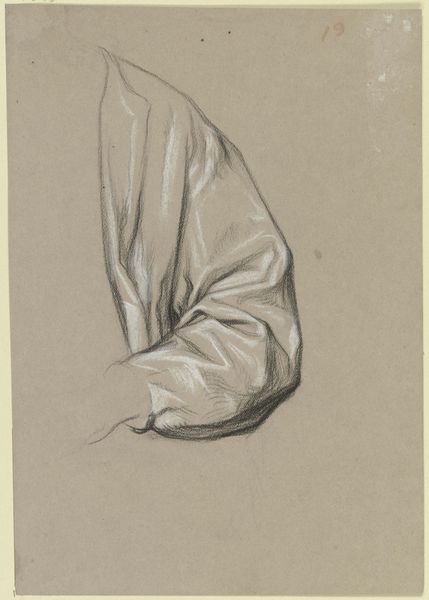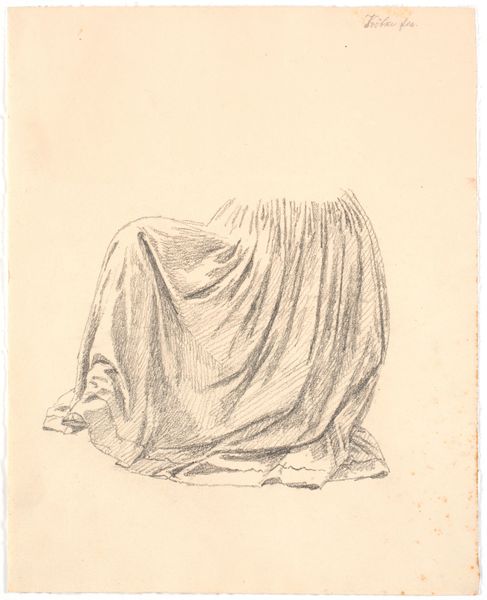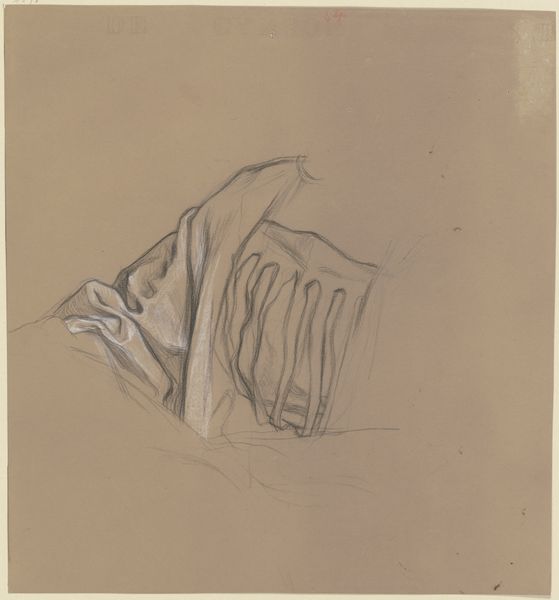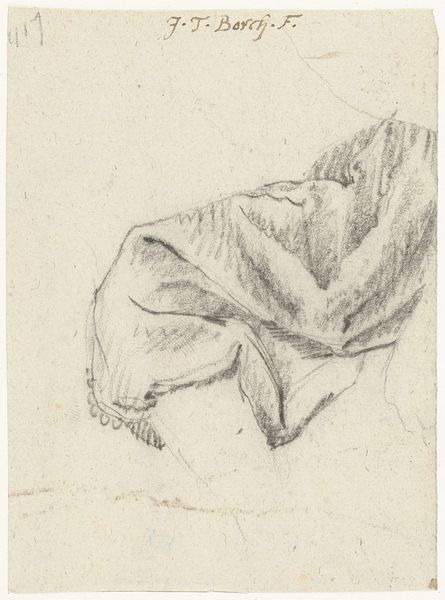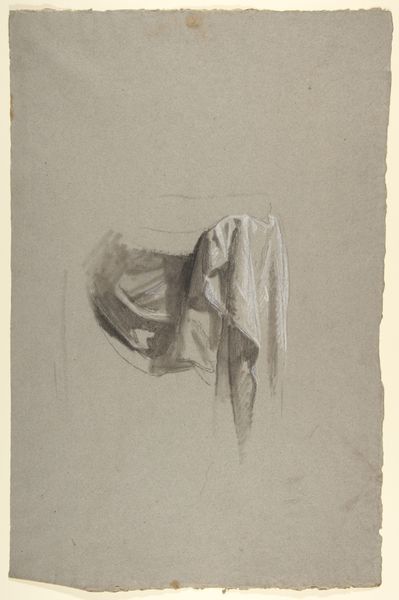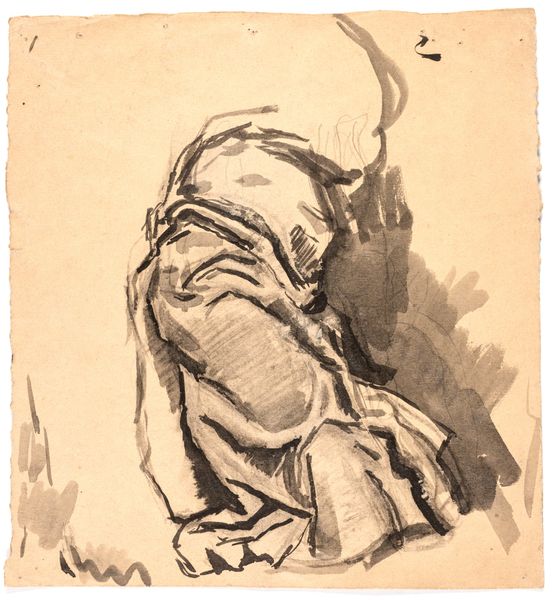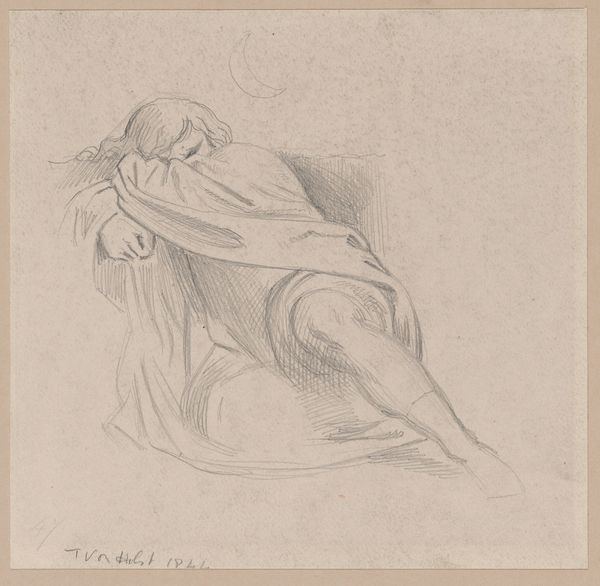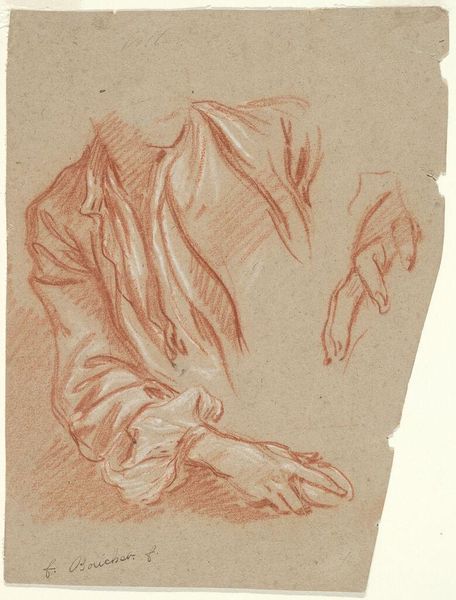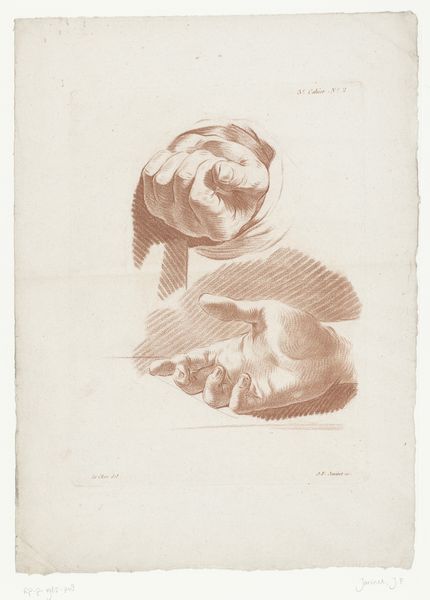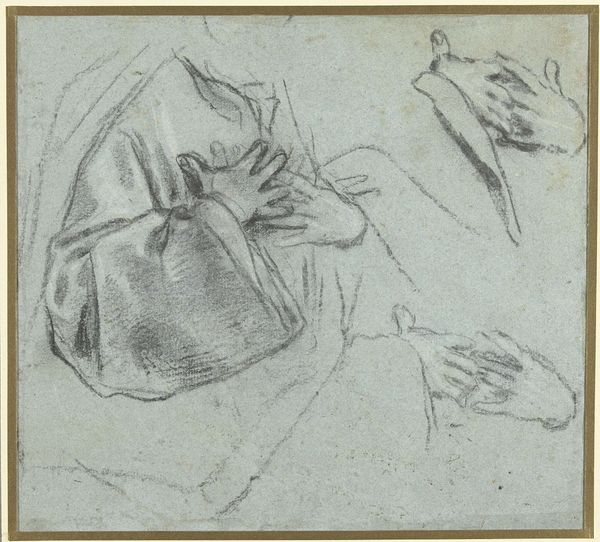
drawing, dry-media, pencil
#
drawing
#
dry-media
#
pencil drawing
#
pencil
#
academic-art
#
realism
Dimensions: 598 mm (height) x 478 mm (width) (bladmaal)
Curator: Before us, we have "Study of Drapery, Resting on a Leg" by Oluf Hartmann, created sometime between 1879 and 1910. It’s a pencil drawing held here at the SMK, Statens Museum for Kunst. What's your immediate reaction to this study? Editor: It's subdued, almost melancholic. The drapery reminds me of shrouds, evoking a sense of mourning. But there’s a certain beauty in the way the light plays across the folds, even though it's just a study. Curator: Exactly! Drapery studies like these were common practice within academic art traditions. Students would analyze the fall and form of cloth to understand how to represent the human figure more convincingly beneath garments. These studies also touch on societal layers of clothing, veiling and revealing based on cultural convention. Editor: It seems almost like a form of coded communication when the artist so acutely illustrates how clothes shape perceptions, no? The fabric takes on a life of its own. What stories do you imagine were considered as they labored over such details? The socio-political climate often dictated appropriate presentation of self. Curator: A fascinating question, one echoed across centuries! For Hartmann and his contemporaries, drapery wasn’t merely about surface accuracy, it was deeply entwined with notions of status. He builds up shadows meticulously, giving volume and depth. He has masterfully rendered the material essence of this cloth. It makes one ponder about the lost meanings imbedded within how people covered and uncovered. Editor: Absolutely, Hartmann's choice of academic style underscores the privilege associated with formalized artistic training. But beyond technique, the visual language prompts discourse on gendered power and social status throughout the era. This artwork's narrative impact transcends pure aesthetics. Curator: It definitely does. Through simple material like pencil and paper, and through dedicating time to studying and perfecting his craft, Hartmann prompts discourse even over a century later. Editor: And for me, engaging with it highlights the inherent power structures, and the coded languages of concealment and exposure, which are timeless in art's function within the grand tapestry of cultural history.
Comments
No comments
Be the first to comment and join the conversation on the ultimate creative platform.
